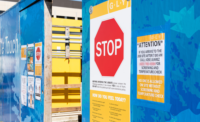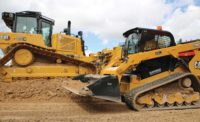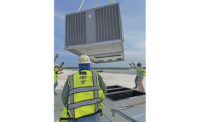If 2020 has seemed extraordinarily long, it may be because to some extent, it’s been two years in one.
The first few months were largely business as usual for the Southeast construction market, despite some forecasts of a cooling national economy. Coming off a successful 2019, with ENR Southeast’s Top Specialty Contractors survey respondents collectively reporting revenue of $7.3 billion—a 19.7% increase over the previous year—contractors opened 2020 with ample backlogs as well as promising prospects for additional opportunities across multiple building sectors from multifamily and hospitality to office and health care.
Then came COVID-19. Within a matter of weeks, the same contractors found themselves plunged into a dramatically different business landscape.
Particularly hard hit were firms with a strong presence in the region’s travel- and tourism-based hospitality and theme park sectors, particularly in Florida, which provided 2019’s highest construction revenue total of $2.4 billion in this year’s survey. Travel restrictions and facility closures, coupled with owners’ long-term uncertainty about when—or if—visitors will return in pre-pandemic numbers caused the figurative project dominos to fall quickly for firms such as KHS&S Contractors, Tampa.
CEO and President Michael Cannon says that postponements, suspensions and activity reductions eroded what had been a “solid,” full-year backlog. “We’ve seen about a 25% reduction in our 2020 projections,” Cannon says.
Fortunately, construction’s classification as an “essential” business has helped blunt the pandemic’s economic effects to some extent, allowing many projects already underway to keep going.
“We’re fairly diversified and still busy,” reports Jack Olmstead, president of Tri-City Electrical Contractors Inc., of Altamonte Springs, Fla. Although several theme park-related jobs and shovel-ready hotel projects have been put on hold, Olmstead says the multifamily sector has, for the most part, remained strong.
“Developers are going forward with high-rise condominiums throughout Florida,” he says.
Health care, another regional mainstay, has experienced project postponements as well, respondents say, the result of diminished revenue from cutbacks in elective surgeries and other noncritical services.
“We see a lot of bidding activity, but few of these projects are immediately starting,” Cannon adds.
Mike Dominici, executive vice president of Alpharetta, Ga.-based interior construction contractor The Circle Group, agrees that while opportunities may still be coming in, “if it hasn’t broken ground already, it likely won’t happen until next year.”
|
Related Links |
Rearranging Resources
Though specialty contractors have welcomed the ability to continue working, keeping projects and support operations going has hardly been easy. The nature of the pandemic itself and varying government response requirements have defied many conventional business coping strategies applied in past economic downturns.
KHS&S was among many firms that resorted to layoffs and furloughs during the outbreak’s initial stages.
“Fortunately, we have been able to rehire some workers as projects got back online,” he says. “However, personal protection protocols in the field have increased our labor costs.”
Among the oft-cited challenges are adapting to varying owner- or GC-mandated requirements aimed at minimizing the potential for further coronavirus spread. Workers have had to adapt to frequent health checks and distancing requirements that limit the number of people in interior spaces and on buck hoist trips.
“We see a lot of bidding activity, but few of these projects are immediately starting.”
– Mike Dominici, Executive Vice President, The Circle Group
Olmstead adds that the costs of purchasing sanitizers, masks and other types of personal protective equipment (PPE) have yet to be fully quantified, as well as their effect on productivity during the summer months.
“We’ve also had some instances in Dade and Broward counties where a worker from another trade tests positive, causing the project to shut down temporarily,” he says.
Office operations have had to adapt quickly to changing conditions, from initial full closures to limited reopenings with smaller staffs, allowing other employees to work from home as needed. Several contractors also report implementing rearranged layouts to provide more distancing, requiring office employees to wear masks and spending more on frequent cleaning and sanitizing of furniture and equipment.
Complicating COVID-19’s challenges are ongoing international trade issues and production disruptions that have delayed delivery of electrical cabinets, glass and other imported materials, especially those manufactured in China. Dominici also reports spot shortages and cost increases on certain types of wood, though the reasons remain unknown.
Otherwise, he says, most materials are readily available. As for labor, “we could always use more skilled tradesmen, but the shortage hasn’t gotten worse.”
Dominici has also heard anecdotes about some owners looking for price reductions based on an assumption that the pandemic may have lowered costs for materials and other resources.
Foggy Forecast
COVID-19 has also added new dimensions to construction market uncertainty that typically occurs in an election year. The timing and extent of any post-pandemic rebound is contingent on the timing of a vaccine and relaxing travel and gathering restrictions.
“It’s a lot like after 9/11,” Olmstead says of the indefinite pause in theme park and hospitality projects.
As more businesses adopt the flexibility and safety of work-from-home operations, “I expect office buildings will be off the table for a while as well,” he says.
“We just have to make the best of what’s happening.”
– Jack Olmstead, President, Tri-City Electrical Contractors
Other market segments appear more favorable, with contractors citing multifamily, assisted-living, schools and industrial and warehouse projects as remaining active. The traditionally strong markets of Atlanta, Nashville and Florida are predicted to retain the momentum of previous years as well.
Indeed, Cannon believes that the current decrease in construction “has leveled off, and I foresee a continuation of current levels throughout 2021.” However, he worries that COVID’s full economic impact has yet to be realized, with many business sectors permanently damaged beyond repair.
“If financial markets begin feeling these effects and funding for development tightens, the impact to the construction industry could be significant,” he says.
Dominici is somewhat more optimistic, noting the large number of projects that have progressed to the point of being ready to go.
“Owners have already invested a lot in land, permits and design,” he says. “I think they’ll happen eventually, though I’m not sure when.”
Having so many shelved projects could easily throw a wrench into contractors’ scheduling processes, given that staff members are being reassigned to other work in the interim.
“We’ve made our commitments to our clients on those jobs,” Dominici says, “but we don’t want to find ourselves stretched thin if too many things get started or restarted at once.”
Nimbleness may well be the key for specialty contractors to manage the next few months, if not years. Olmstead adds, “We just have to make the best of what’s happening.”
Varied Hot Spots
As expected, Southeast specialty contractors collectively reported the greatest percentage of revenue from the state of Florida. For this year’s ranking, covering revenue from 2019, a total of 46 respondents reported roughly $2.4 billion in revenue from the Sunshine State, or about 32% of all Southeast specialty contracting revenue reported in this year’s survey. That’s up from the $1.9 billion in Florida revenue that specialty firms reported in last year’s ranking.
Across the Southeast, state-by-state revenue totals varied compared with a year ago, with some areas increasing more than others, and one statewide decrease reported.
Those state totals, from highest to lowest, included the following: North Carolina, $1.96 billion, up from $1.4 billion a year ago; Georgia, $1.1 billion, up from $1 billion; South Carolina, $650.4 million, down from the $709 million reported last year; Tennessee, $740 million, up significantly from $500.7 million; and Alabama, $374 million, up notably from the $296.5 million reported last year.
Puerto Rico revenue totaled $68.9 million, well down from the $241.6 million reported in last year’s survey.
About the Survey
ENR Southeast’s Top Specialty Contractors survey lists firms’ 2019 revenue figures earned from projects located in the Southeast. In addition to revenue, the main ranking includes information about each firm, such as top markets and largest recent contracts. Breakout lists rank firms based on state and market-sector revenue.







Post a comment to this article
Report Abusive Comment